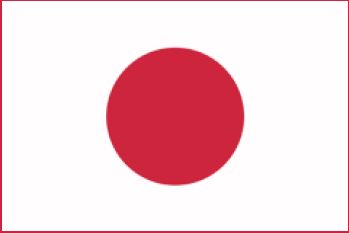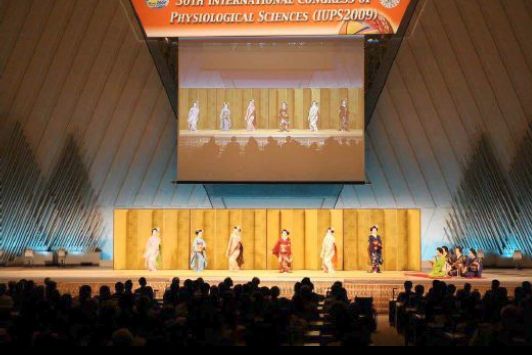
Physiology News Magazine
Physiology in Japan
The Physiological Society of Japan has, historically, been strong – playing an important role nationally and internationally. But the society isn’t taking its future strength for granted.
Features
Physiology in Japan
The Physiological Society of Japan has, historically, been strong – playing an important role nationally and internationally. But the society isn’t taking its future strength for granted.
Features
Satoshi Kurihara
President
Yoshihiro Ishikawa
Vice President (Treasurer)
Noriyuki Koibuchi
Vice President (Education)
Masato Konishi
Vice President (General Affairs)
Yoshihiro Kubo
Vice President (International Relations and Meetings)
Noriko Takuwa
Vice President (Information and Public Relations)
Fusao Kato*
Vice President (Science and Research)
* corresponding author
https://doi.org/10.36866/pn.91.33
The Physiological Society of Japan has, historically, been strong – playing an important role nationally and internationally. Now the society is seeking the way to transform itself from a ‘medical school physiology teachers guild’ to an Asian core of physiological sciences.

Accordingly, the PSJ has been a member of the International Union of Physiological Sciences (IUPS) since its founding in 1953 and has organized the IUPS World Congress twice: in 1965 in Tokyo and in 2009 in Kyoto. For the 2009 IUPS Congress, we hosted nearly 4000 researchers from around the world and it resulted in a great success under the leadership of the President, Yasushi Miyashita. The main theme of IUPS 2009 was, as many of you remember, ‘the logic of life’, which is the literal translation of the Japanese term for physiology – ‘Seiri-Gaku’. Our choice of this theme reflects our belief that physiology provides the scientific basis for understanding the functions and mechanisms of living systems. Masao Ito
(1993–1997) and Akimichi Kaneko (2005–2009) served as presidents of the IUPS, and Yoshihisa Kurachi, with the recommendation of the PSJ, is serving as First Vice President of the IUPS.
Open to the world, especially to Asia
Since its founding, the PSJ has held domestic meetings annually, except in 1944 and 1945, due to the difficulties resulting from World War II. In March 2013, we celebrated our 90th annual meeting in Tokyo, in which 960 poster presentations, 13 educational programmes and 65 symposia were held. These symposia included a Korea–China–Japan joint symposium and a joint symposium with the Chinese Association of Physiological Sciences. As such, we are proud that our annual meetings have become an important medium for amicable communications among Asian physiologists. Yasunobu Okada, a former president of the PSJ, also served as president of the Federation of Asian and Oceanian Physiological Societies (FAOPS) from 2007 to 2011 and we will host its 9th congress in Nagoya in 2019. It is worth noting that, according to our globalization policy, all presentations (with a few exceptions) at PSJ annual meetings since 2006 have been made in English. This policy has facilitated the participation of and presentations by non-Japanese researchers at our domestic meetings, and has also provided occasions for young Japanese physiologists to experience presentations and discussions in English even in domestic meetings.
Contributions to the physiologist community
The PSJ publishes two journals: The Journal of Physiological Sciences, an international peer-reviewed bimonthly in English, and The Journal of The Physiological Society of Japan, a bimonthly in Japanese distributed to the members. The former is edited by the PSJ (Editor-in-Chief, Yoshihiro Ishikawa, treasurer of the PSJ) and published by Springer-Verlag. The PSJ has also established Society Awards to support young researchers and female researchers. These awards include the Promotion Award of the Physiological Society of Japan for Young Scientists and the Irisawa Memorial Awards. Many outstanding young researchers who have received these awards are actively contributing to the progress of physiological sciences in Japan and worldwide.


Research directions: a unique national institute – NIPS-SEIRIKEN
Faculty members, young researchers including post-doctoral fellows and graduate students from a variety of academic fields, including medicine, pharmacology, dentistry, biology, technology and sport sciences, as well as researchers in national, municipal and private research institutions constitute the largest part of PSJ members.
Of these research institutes, the National Institute for Physiological Sciences (NIPS–SEIRIKEN) in Okazaki deserves special mention, because it is unique and the largest national institute in Asia devoted to research and graduate education of physiological sciences. The NIPS, established in 1977, is an interuniversity research institute that fosters collaboration among universities for fundamental research and education into human physiology. The researchers of the NIPS investigate the functions of the human body and brain and their mechanisms through collaborative studies with domestic and foreign scientists. The NIPS also provides specialized techniques and large-scale equipment for shared use in addition to the opportunity for graduate students and young scientists to obtain training and education in physiological research.
The NIPS has three missions. The first is to conduct pioneering research at every level, from molecules to cells, tissues, organs and entire organisms, as well as organically integrating the results of this research to elucidate the functions of the body and their mechanisms. The second mission is to promote collaborative research among other organizations, including national, public and private universities nationwide, and to promote the shared use of advanced research facilities, equipment, databases, research methods and meeting facilities. The third mission of the NIPS is to nurture graduate students and young researchers, to help them become international researchers in the physiological sciences. As such, the NIPS is an extremely important medium for promoting scientific communication among physiologists belonging to various types of schools and institutes, such as the Riken Brain Science Institute.
Major research fields of the PSJ
The PSJ has a strong tradition of research into the physiology of excitable cells, such as neurons and muscles, which has continued to the present day. Neurophysiology, cardiovascular physiology and channel physiology are among the most active research domains of the PSJ, but research in many other fields, which we do not list due to the paucity of space, is also highly active. In addition, research by PSJ members often introduces innovative technologies, including single-molecule imaging, large-scale imaging of cellular excitations, genetically regulated Ca2+ imaging, ultrastructural visualization of subsynaptic receptor distributions, and dynamic membrane-potential imaging in excitatory cells. The realization and application of these technologies are made possible, in part, through interactions between academia and industry, such as microscope and micromanipulator companies, and through the strong background in genetic engineering shared by many Japanese laboratories.
The research activities of the members of the PSJ are mostly supported by grants from the Ministry of Education, Culture, Sports, Science and Technology (MEXT) distributed by the Japan Society for Promotion of Sciences (JSPS). There are Neurophysiology, General Physiology, and Environmental Physiology sections to which the majority of members apply. The JSPS also provides fellowships to graduate students and postdoctoral students, including those from foreign countries. There are also private funding agencies and supporting grants from each university. A list of presentations for recent important findings by PSJ members can be found at the ‘Science Topics’ section of the PSJ website: int.physiology.jp/en/sciencetopics/
Commission of physiology education
Another important activity of the PSJ members is education. This involves undergraduate and graduate education in various academic institutions. Because of the increasing specialization of modern science, presentations at annual meetings of the PSJ are often incomprehensible to researchers outside each specialty area. As a consequence, researchers often choose to attend meetings of other organizations, such as the Society for Neuroscience, dedicated to their own area of interest. On the other hand, to obtain a tenure-track position at a medical school, physiologists must be able to teach a wide range of physiological subjects. Until recently, however, the PSJ has provided little opportunity during its annual meetings to acquire the required teaching skills and knowledge. To provide an opportunity to acquire the wide range of knowledge required for teaching physiology, the Education Committee of the PSJ has created an educational lecture course in physiological science and a series of model lectures in Japanese designed for undergraduates. Members of the PSJ who take part in the lecture course can earn points towards certification as a Physiology Educator. We hope that these programmes will improve the quality of teaching in physiology, help postdoctoral fellows obtain academic positions, and increase attendance at annual meetings of the PSJ.

The current concerns and future solutions of the PSJ
The following are a few of the concerns shared by the members and the council of the PSJ:
- The decrease in the number of members. This decrease should be proportional to that in the younger population in Japan, mostly due to the retirement of large numbers of baby-boomer researchers. However, the number of members of the societies for more ‘modern’ biosciences, such as the Japan Neuroscience Society and the Molecular Biology Society of Japan, is increasing. We are analysing the cause of the decrease in membership and are searching for ways to make the PSJ more attractive to young researchers. An extension of the society target from‘physiology’ to ‘physiological sciences’ would be a key for this.
- Relationships with other societies. To address this concern, we are now trying to update the society’s image from ‘a guild of medical school physiology teachers’ to ‘a community of people working in integrative physiological sciences, in Japan and elsewhere’. Doing so would also help address our first concern as mentioned above. For this purpose, we encourage joint symposia and meetings with other domestic societies, such as the Japanese Association of Anatomists and the Japanese Pharmacological Societies, and with foreign societies, especially those in Asia. We welcome proposals for such international joint symposia at our annual meetings.
- Education. As described above, we are keen to maintain the educational standards of physiology, not only in medical schools but also in other institutes for related biomedical science education and co-medical training. The aforementioned ‘Physiology Educator’ system introduced recently is an example of such attempt.
Under the leadership of Satoshi Kurihara, the president of the PSJ since 2012, the PSJ will, we believe, successfully address these concerns and continue to make essential contributions to the development of the physiological sciences in Japan and in other Asian countries.
The Society Website: http://int.physiology.jp/
